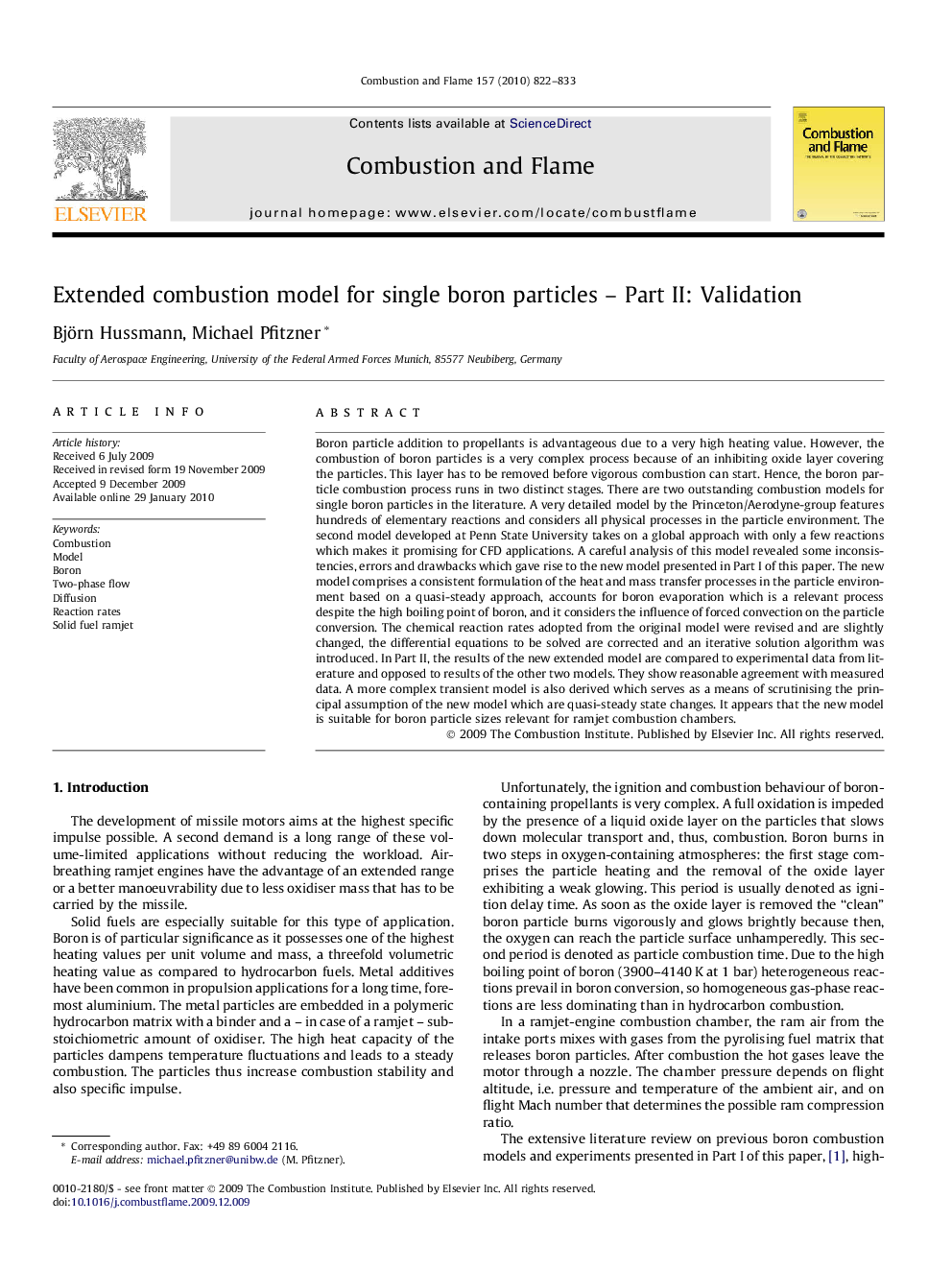| کد مقاله | کد نشریه | سال انتشار | مقاله انگلیسی | نسخه تمام متن |
|---|---|---|---|---|
| 169990 | 458061 | 2010 | 12 صفحه PDF | دانلود رایگان |

Boron particle addition to propellants is advantageous due to a very high heating value. However, the combustion of boron particles is a very complex process because of an inhibiting oxide layer covering the particles. This layer has to be removed before vigorous combustion can start. Hence, the boron particle combustion process runs in two distinct stages. There are two outstanding combustion models for single boron particles in the literature. A very detailed model by the Princeton/Aerodyne-group features hundreds of elementary reactions and considers all physical processes in the particle environment. The second model developed at Penn State University takes on a global approach with only a few reactions which makes it promising for CFD applications. A careful analysis of this model revealed some inconsistencies, errors and drawbacks which gave rise to the new model presented in Part I of this paper. The new model comprises a consistent formulation of the heat and mass transfer processes in the particle environment based on a quasi-steady approach, accounts for boron evaporation which is a relevant process despite the high boiling point of boron, and it considers the influence of forced convection on the particle conversion. The chemical reaction rates adopted from the original model were revised and are slightly changed, the differential equations to be solved are corrected and an iterative solution algorithm was introduced. In Part II, the results of the new extended model are compared to experimental data from literature and opposed to results of the other two models. They show reasonable agreement with measured data. A more complex transient model is also derived which serves as a means of scrutinising the principal assumption of the new model which are quasi-steady state changes. It appears that the new model is suitable for boron particle sizes relevant for ramjet combustion chambers.
Journal: Combustion and Flame - Volume 157, Issue 4, April 2010, Pages 822–833